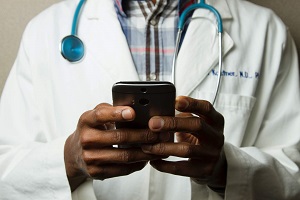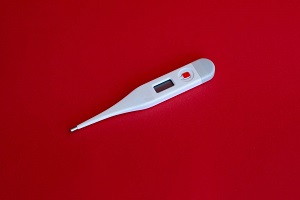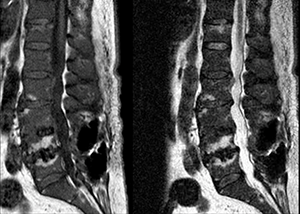Online Library
OHSU's online CME offerings
OHSU Continuing Professional Development maintains a library of originally created online continuing medical education.
About this activity
For: Nurses, Social Workers, Pharmacists, Speech Language Pathologists, Occupational Therapists, and others!
This 6-module online series covers an overview of dementias, Age-Friendly communication with persons living with dementia, communicating with the healthcare team, referring patients and family care partners to community resources, and more.
Time to complete: approximately 2-3 hours
CME credit available
After taking this course, participants will be able to
- Recognize the symptoms of different types of dementias.
- Differentiate between dementia vs delirium.
- Explain how a dementia diagnosis impacts the patient and family.
- Demonstrate the ability to communicate with a person who has dementia in an Age-Friendly manner.
- Increase the ability to communicate a person's care plan with the healthcare team.
- Increase the ability to refer patients and family care partners to community resources.
About this activity
This course has been created to offer relevant, succinct, and evidence-based information for you (and your learners) in both classroom and clinical teaching settings. The course is designed to be reviewed and engaged with in its entirety (as the earlier modules/lessons lay the foundation for the strategies and tips that follow and promote an understanding and appreciation of how and why to use specific strategies and approaches). However, the information can also be used in a just-in-time manner for key strategies/tips as you need them and/or for reference on an ongoing basis.
Time to complete: approximately 30 minutes.
CME credit available
Learning Objectives
-
Define feedback and differentiate it from evaluation.
-
Recognize the role of feedback in learners’ professional development.
-
Identify barriers and enablers to providing effective feedback.
-
Review a variety of feedback frameworks, models and strategies.
-
Create your own feedback toolkit with tips, strategies and ideas about how to provide effective feedback to your learners.
Target Audience: Faculty, instructors, preceptors and others who provide feedback to learners
About this activity
Part 1 of the Providing Accessible Mental Health Care series, this foundational course prepares mental health professionals to provide accessible care to clients with intellectual and developmental disabilities and co-occurring mental health diagnosis.
Time to complete: approximately 90 minutes.
CME credit available
Learning Objectives
After taking this course, learners will be able to
- Recognize the unique needs and challenges faced by individuals with intellectual and developmental disabilities (IDD) to inform effective and individualized care.
- Evaluate and challenge personal biases and assumptions to provide more inclusive, respectful, and equitable care.
- Identify and address systemic barriers—such as administrative burdens and limited resources—that impact access to quality mental health care.
- Apply effective communication strategies, including the use of clear language and Augmentative and Alternative Communication (AAC) tools, to enhance client interactions.
- Build strong therapeutic relationships with clients with IDD by fostering trust and rapport.
- Commit to ongoing advocacy. Take actionable steps and collaborate with peers to create lasting change.
OHSU employees access the on-demand training on Compass. Search the course title or keyword “IDD”.
Non-CME Online Education
The full content of these activities continues to be available at no charge as part of our ongoing pilot program. We are in the process of reviewing and updating our online library, so CME credit is not currently available for our online modules.
About this activity

This course has been created to offer relevant, succinct, and evidence-based information for you (and your learners) in both classroom and clinical teaching settings. The course is designed to be reviewed and engaged with in its entirety (as the earlier modules/lessons lay the foundation for the strategies and tips that follow and promote an understanding and appreciation of how and why to use specific strategies and approaches). However, the information can also be used in a just-in-time manner for key strategies/tips as you need them and/or for reference on an ongoing basis.
Time to complete: approximately 30 minutes.
CME credit available
Learning Objectives
-
Define feedback and differentiate it from evaluation.
-
Recognize the role of feedback in learners’ professional development.
-
Identify barriers and enablers to providing effective feedback.
-
Review a variety of feedback frameworks, models and strategies.
-
Create your own feedback toolkit with tips, strategies and ideas about how to provide effective feedback to your learners.
Target Audience: Faculty, instructors, preceptors and others who provide feedback to learners.
About this activity

This activity will provide some background on the use of alternative medicines, including where they have been helpful to some, and will also take a scientific look at the effectiveness of these medicines on treating disease. It was adapted from an in-person talk, originally delivered by Ali J. Olyaei, PharmD, BCPS, on February 10, 2020, as part of the 2020 Primary Care Review Conference provided by the Division of Continuing Professional Development, OHSU.
Time to complete: approximately 35 minutes.
Credit fee: CME credit not currently available
Learning Objectives
By the end of this lesson you should be able to:
-
Identify populations who may benefit from complementary and alternative medicines.
-
Understand some of the quality and safety concerns surrounding supplements.
-
Apply research on supplements towards the effective treatment of patients.
Target Audience: Family physicians, internists, hospitalists, nurse practitioners, physicians assistants, and other primary care health care providers.
Ctrl+click to open in a new window
About this activity

This activity will provide some specific, evidence-informed strategies around communication, with respect to talking to patients about antibiotics and vaccinations. It was adapted from an in-person talk, originally delivered by Theresa Liao M.D., FACP on May 31, 2019, as part of the 2019 Infectious Diseases for the Non-Specialist Conference provided by the Division of Continuing Professional Development, OHSU.
Time to complete: approximately 30 minutes.
Credit fee: CME credit not currently available
Learning Objectives
By the end of this lesson you should be able to:
-
Appreciate the role of effective communication for a variety of clinical outcomes.
-
Utilize specific evidence-informed communication techniques in communicating with patients when antibiotics are not needed.
-
Utilize specific evidence-informed communication techniques in communicating with patients when there is hesitancy about vaccinations.
-
Demonstrate greater awareness of larger societal communications around antibiotics and vaccines.
Target Audience: Family physicians, internists, nurse practitioners, physicians assistants, and other primary care health care providers.
Ctrl+click to open in a new window
About this activity

The activity will largely focus on transitional age youth and emerging adults, and will touch a little bit on what happens when younger teens and tweens develop psychotic symptoms. It was adapted from an in-person talk, originally delivered by Craigan Usher, M.D. on March 9, 2018, as part of the 2018 Pediatric Mental Health Conference provided by the Division of Continuing Professional Development, OHSU.
Time to complete: approximately 1 hour
Credit fee: CME credit not currently available
Learning Objectives
By the end of this lesson you should be able to:
- Define the term schizophrenia using DSM5 criteria.
- Identify three risks for developing schizohprenia.
- Be familiar with one of the first-line agents for treating psychosis in young people.
- Describe the benefits and limitations of dopamine-blocking agents.
Target Audience: Family physicians, pediatricians, nurse practitioners, physician assistants and other providers of pediatric and adolescent care.
Ctrl+click to open in a new window
About this activity

This activity will address the quick, easy to remember, upper and lower extremity neurological exams. It will also cover reflexes, with a focus on strength and sensation. Lastly, it it will provide examples of some quick, easy exams that can be replicated in your clinic. It was adapted from an in-person talk, originally delivered by Nels Carlson M.D. on February 13, 2020, as part of the 2020 Primary Care Review Conference provided by the Division of Continuing Professional Development, OHSU.
Time to complete: approximately 45 minutes.
Credit fee: CME credit not currently available
Learning Objectives
By the end of this lesson you should be able to:
- Understand how to integrate your anatomy knowledge with the history and/or physical exam to make a diagnosis.
- Recognize what physical exam findings would be associated with specific diagnosis.
- Identify upper and lower extremity nerve and muscle anatomy.
- Apply anatomy to a clinical situation.
Target Audience: Family physicians, internists, hospitalists, nurse practitioners, physicians assistants, and other primary care health care providers.
Ctrl+click to open in a new window
About this activity

This activity is designed to provide a primer on a telehealth services and what’s involved with the various aspects of telehealth.
Key points:
- Telehealth is a rapidly advancing field attempting to correct provider shortages, wage gaps, and increasing burnout rates.
- There has been increasing data on the use of telehealth.
- There are a unique set of “webside manners” needed for virtual medicine.
- As with other aspects of health care, it is important to consider issues of equity when implementing telehealth options.
Time to complete: approximately 45 minutes.
Credit fee: CME credit not currently available
Learning Objectives
By the end of this lesson you should be able to:
- Describe the spectrum of telehealth modalities including synchronous vs asynchronous care platforms.
- Define "Webside" manners and employ them to conduct a more effective patient encounter.
- Identify limitations of digital visits and strategies to mitigate them.
- Follow current rules and regulations pertinent to the telehealth.
- Understand the “digital divide” and use an inclusive and critical mindset in the practice of telehealth.
Target Audience: LIPs currently using telehealth as a visit type; researchers using telehealth for research visits; and health professional trainees, including medical students, nursing students, physician-assistants, dental students, residents and fellows.
American Medical Association: Oregon Health & Science University School of Medicine designates this enduring material for a maximum of 0.75 AMA PRA Category 1 Credits™. Physicians should claim only the credit commensurate with the extent of their participation in the activity.
Ctrl+click to open in a new window
About this activity

This activity will address some of the facts and fictions out there about nutrition in general, but with a focus on cardiovascular nutrition, as this field more than any other field in medicine has a lot of opinions based on nutrition, versus facts. Think of this activity as a way to cut through some of the clutter. Evidence based recommendations for cardiovascular risk reduction will also be provided. It was adapted from an in-person talk, originally delivered by Tracy Severson, R.D., L.D. on February 15, 2019, as part of the 2019 Primary Care Review Conference provided by the Division of Continuing Professional Development, OHSU.
Time to complete: approximately 45 minutes.
Credit fee: CME credit not currently available
Learning Objectives
By the end of this lesson you should be able to:
- Provide evidence-based nutrition recommendations to patients for CV risk reductions.
- Discuss common nutrition-related misconceptions.
Target Audience: Family physicians, internists, hospitalists, nurse practitioners, physicians assistants, and other primary care health care providers.
Ctrl+click to open in a new window
About this activity

The activity will quickly explore ten different cases of fever. The ten different cases were chosen to highlight various take home lessons that you will be able to use in relation to the diagnosis and treatment of patients presenting with fevers. It was adapted from an in-person talk, originally delivered by George Mejicano, M.D., M.S., on May 31, 2019, as part of the 2019 Infectious Diseases for the Non-Specialist Conference provided by the Division of Continuing Professional Development, OHSU.
Time to complete: approximately 30 minutes.
Credit fee: CME credit not currently available
Learning Objectives
By the end of this lesson you should be able to:
-
Understand the most important characteristics of fever in puzzling cases.
-
Appropriately work up patients presenting with fever.
-
Determine infectious and noninfectious causes of fever using various laboratory tests.
Target Audience: Family physicians, internists, nurse practitioners, physicians assistants, and other primary care health care providers.
Ctrl+click to open in a new window
About this activity

This activity will provide an overview of incidental spine MRI marrow findings that are of uncertain clinical significance and occasionally may represent previously undiagnosed malignancy. The characterization of these imaging findings, differential diagnosis and further evaluation will be discussed. The presentation was adapted from an in-person talk, originally delivered by Hans Carlson MD, Physical Medicine & Rehabilitation and Thomas Deloughery MD, Hematology/Oncology, on February 10, 20210, as part of the 2021 Primary Care Review Conference provided by the Division of Continuing Professional Development, OHSU.
Time to complete: approximately 1 hour
Credit fee: CME credit not currently available
Learning Objectives
By the end of this lesson you should be able to:
- Recognize that vertebral marrow signal abnormalities (VMSA) identified on thoracolumbar spine MRI represent a range of possible findings ranging from benign hemangiomas to malignancies.
- Understand that the heterogeneity in how VMSA are described and reported creates uncertainty in determining appropriate clinical management decisions.
- Be aware the despite the possibility that VMSA may represent a previously undiagnosed malignancy, these incidental findings receive no further work up to 1/3 of the time despite having a recommendation for follow up described in the radiology report.
Target audience: Family physicians, internists, hospitalists, nurse practitioners, physicians assistants, and other primary care health care providers.
Ctrl+click to open in a new window
Additional online CME
Below is a list of online CME activities provided by our partners and certified for credit by OHSU CPD.
Health disparities are an ongoing issue in the American healthcare system. These health disparities have effects on the health of the individual, health of the society as well as large effects on the economy. These health disparities often occur because there are systematic barriers that make accessing health care more difficult for some groups. This program will look at the social determinants of health and some of the ways that culture can affect health beliefs. In addition, this program introduces the concept of cultural competence as a process to improve patient interactions. The goal of this training is to expose the learner to these ideas and tools in order to prevent health disparities. This course is approved by the Oregon Health Authority’s Office of Equity and Inclusion as an educational training for all healthcare professionals.
Oregon State University College of Pharmacy, as the only publicly funded higher education pharmacy institution in the state, often works at the behest of the state of Oregon .The college is asked to respond to pharmacy education needs driven by the legislature, such as in statues and those driven by the Oregon Health Authority by public health care policy, such as with this course.
American Medical Association:
This activity has been planned and implemented in accordance with the accreditation requirements and policies of the Accreditation Council for Continuing Medical Education (ACCME) through the joint providership of OHSU School of Medicine and Oregon State University College of Pharmacy. The OHSU School of Medicine is accredited by the ACCME to provide continuing medication education for physicians.
Accreditation
Oregon Health & Science University School of Medicine is accredited by the Accreditation Council for Continuing Medical Education to provide continuing medical education for physicians.
ACCME CME Finder
ACCME's CME Finder is a web-based search tool designed to help health care professionals find accredited CME activities that meet their needs. Users can search for information about currently available CME activities that have been registered for American Board of Anesthesiology's Maintenance of Certification program (ABA MOCA), American Board of Internal Medicine's Maintenance of Certification program (ABIM MOC), or American Board of Pediatrics Maintenance of Certification program (ABP MOC).